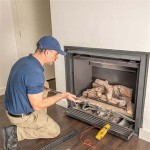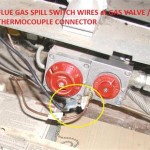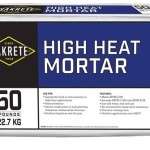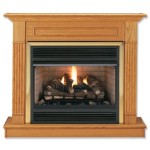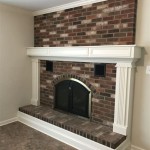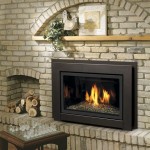Outdoor Fireplace Steel Insert: Enhancing Outdoor Living Spaces
The outdoor fireplace has become a popular feature in residential and commercial landscapes, offering a focal point for gathering and extending the usability of outdoor spaces into cooler months. While traditional masonry fireplaces are visually appealing, they can be costly to build and may not be the most efficient in heating large areas. Outdoor fireplace steel inserts offer an alternative solution, combining modern engineering with classic aesthetics to provide a durable, efficient, and often more affordable option for creating a cozy outdoor atmosphere.
An outdoor fireplace steel insert is essentially a prefabricated firebox constructed from steel, designed to be installed within an existing masonry structure or a custom-built enclosure. These inserts provide a controlled burning environment, optimizing heat output and minimizing smoke. The construction materials and design features of steel inserts contribute to their longevity, safety, and overall performance compared to open-air fire pits or traditional fireplaces. Furthermore, the availability of different sizes, styles, and fuel options makes steel inserts adaptable to a wide range of outdoor design preferences and functional requirements.
Key Benefits of Using Outdoor Fireplace Steel Inserts
The adoption of outdoor fireplace steel inserts is driven by several key advantages over other outdoor heating solutions. These benefits relate to performance, cost-effectiveness, and environmental impact, making them a compelling choice for property owners seeking to enhance their outdoor living spaces.
*Improved Heating Efficiency:
Traditional masonry fireplaces often lose a significant amount of heat up the chimney. Steel inserts, particularly those with insulated fireboxes and integrated venting systems, are designed to maximize heat radiation into the surrounding area. This improved efficiency translates to more heat output per unit of fuel consumed, leading to lower operating costs and a more comfortable outdoor environment. Some models include features like blowers to circulate warm air, further enhancing their heating capabilities. The controlled combustion within the steel insert also contributes to a more consistent and predictable heat output, allowing for better management of the outdoor temperature.The design of the firebox itself plays a crucial role in its heating efficiency. Many steel inserts incorporate refractory panels that retain heat and radiate it back into the fire, creating a hotter and more efficient burn. The shape and size of the firebox are also optimized to promote proper airflow and complete combustion, reducing the amount of unburned fuel that escapes up the chimney.
*Enhanced Safety Features:
Open-air fire pits and poorly constructed fireplaces pose significant safety risks, including the potential for uncontrolled sparks, embers, and smoke. Steel inserts offer a safer alternative by containing the fire within a controlled environment. Features like spark screens, airtight doors, and efficient venting systems minimize the escape of potentially hazardous materials. The durable construction of the steel insert also reduces the risk of structural failure or collapse, which can occur with older or poorly maintained masonry fireplaces. In addition, many models incorporate safety features such as automatic shut-off mechanisms and temperature sensors to prevent overheating and ensure safe operation.The use of high-quality steel in the construction of the insert provides a robust barrier against the spread of fire. The tight seals around the doors and venting systems prevent the leakage of carbon monoxide and other harmful gases into the surrounding environment. Furthermore, the controlled combustion process within the insert reduces the amount of smoke produced, minimizing the risk of respiratory problems and improving air quality.
*Increased Durability and Longevity:
Outdoor fireplaces are exposed to the elements, making them susceptible to damage from rain, snow, wind, and extreme temperature fluctuations. Steel inserts are designed to withstand these harsh conditions, offering superior durability and longevity compared to masonry fireplaces or open-air fire pits. The use of corrosion-resistant steel alloys and durable coatings protects the insert from rust and other forms of degradation. The robust construction of the insert also makes it resistant to cracking, warping, and other forms of structural damage. With proper maintenance, a steel insert can provide years of reliable performance, making it a worthwhile investment for property owners.The increased lifespan of a steel insert translates to long-term cost savings, as it reduces the need for frequent repairs or replacements. The resistance to the elements also minimizes the amount of maintenance required, saving time and effort. By choosing a high-quality steel insert, property owners can enjoy the benefits of an outdoor fireplace without the hassle and expense of maintaining a traditional masonry structure.
Materials and Construction of Steel Inserts
The performance and durability of an outdoor fireplace steel insert are directly related to the quality of the materials used in its construction and the sophistication of its design. Different types of steel, insulation materials, and venting systems contribute to the overall effectiveness of the insert.
Steel is the primary material used in the construction of outdoor fireplace inserts. The type of steel used can vary depending on the manufacturer and the intended application. Common types of steel include carbon steel, stainless steel, and weathering steel (also known as Cor-Ten steel). Carbon steel is a cost-effective option that provides adequate strength and durability for most applications. Stainless steel offers superior corrosion resistance, making it ideal for coastal environments or areas with high humidity. Weathering steel develops a protective layer of rust over time, providing a unique aesthetic appeal and excellent resistance to corrosion.
The thickness of the steel used in the construction of the insert is also an important factor to consider. Thicker steel provides greater strength and durability, allowing the insert to withstand higher temperatures and pressures. It also reduces the risk of warping or cracking over time. Insulated fireboxes are common, using materials like refractory bricks or ceramic fiber blankets to retain heat and improve efficiency. These insulating materials help to create a hotter and more consistent burn, reducing the amount of fuel required to maintain a comfortable outdoor temperature.
The venting system is another critical component of the outdoor fireplace steel insert. The venting system is responsible for safely removing smoke and other combustion byproducts from the firebox and directing them away from the outdoor living space. Different types of venting systems are available, including direct vent, B-vent, and chimney vent systems. Direct vent systems draw air from outside the building to fuel the fire, eliminating the need for a traditional chimney. B-vent systems are designed for use with natural gas or propane fireplaces and require a dedicated vent pipe. Chimney vent systems are designed to be used with existing masonry chimneys and require proper sizing and installation to ensure safe and efficient operation.
Installation Considerations for Steel Inserts
Proper installation is crucial for ensuring the safe and efficient operation of an outdoor fireplace steel insert. It's important to consider factors like location, venting, and fuel supply during the installation process. Failing to address these considerations can lead to safety hazards, poor performance, and costly repairs.
The location of the outdoor fireplace should be carefully considered to minimize the risk of fire hazards and ensure optimal heat distribution. The fireplace should be located away from flammable materials such as trees, shrubs, and dry grass. It should also be positioned in a way that minimizes exposure to wind, which can cause the fire to burn unevenly and create excessive smoke. The fireplace should be installed on a level, non-combustible surface such as concrete, stone, or brick. In addition, the location should be chosen to minimize the impact on neighboring properties, considering factors like smoke and noise.
The venting system must be properly installed to ensure the safe and efficient removal of smoke and other combustion byproducts. The venting system should be sized appropriately for the fireplace and the type of fuel being used. The vent pipe should be installed according to the manufacturer's instructions and local building codes. All connections should be properly sealed to prevent leaks. The venting system should also be inspected regularly to ensure that it is free of obstructions and in good working condition.
The fuel supply must be properly installed and maintained to ensure the safe and reliable operation of the outdoor fireplace. For gas-fueled fireplaces, the gas line should be installed by a qualified professional and should be properly sized and tested for leaks. The gas supply should also be equipped with a shut-off valve that is easily accessible in case of emergency. For wood-burning fireplaces, the wood should be stored in a dry place away from the fireplace. Only seasoned firewood should be used to minimize smoke and creosote buildup. The fireplace should also be cleaned regularly to remove ash and other debris.
Choosing the Right Outdoor Fireplace Steel Insert
Selecting the appropriate outdoor fireplace steel insert requires careful consideration of several factors, including the desired aesthetic, heating requirements, fuel preferences, and budget constraints. A thorough evaluation of these aspects will ensure that the chosen insert meets the specific needs and preferences of the property owner.
The aesthetic design of the steel insert should complement the overall style of the outdoor living space. Different styles are available, ranging from traditional to contemporary. Traditional inserts often feature ornate detailing and a classic brick-like appearance. Contemporary inserts tend to have clean lines and a minimalist design. The choice of materials and finishes can also influence the aesthetic appeal of the insert. Common finishes include black, stainless steel, and painted steel. It is crucial to select an insert that blends seamlessly with the surrounding landscape and enhances the overall ambiance of the outdoor area.
The heating requirements of the outdoor space should also be considered. The size of the area to be heated, the climate, and the desired temperature will all influence the size and heating capacity of the insert. Inserts are typically rated in terms of BTU (British Thermal Units), which is a measure of heat output. A larger area will require a higher BTU rating. In colder climates, a more powerful insert may be necessary to provide adequate heat. It is important to accurately assess the heating requirements of the outdoor space to select an insert that provides sufficient warmth and comfort.
The fuel preference is another important factor to consider. Outdoor fireplace steel inserts are available in wood-burning, gas-fueled (natural gas or propane), and electric models. Wood-burning inserts offer the traditional ambiance and crackling sound of a real fire. Gas-fueled inserts are more convenient and offer instant ignition and adjustable flame height. Electric inserts are the easiest to install and operate, but they may not provide the same level of heat as wood-burning or gas-fueled models. The choice of fuel will depend on personal preference, convenience, and environmental considerations.

Stainless Steel Outdoor Vented Wood Burning Fireplace Insert At Com

Outdoor 42 Stainless Steel Wood Burning Fireplace Wre3000 Wre3042 F0453 F0454

Outdoor Fireplace Stainless Steel Complete Vent Free 36 By Superior Vre4300 Series Vre4336

Necessories 31 In Fire Pit Steel Insert Boxed Firering The Home Depot

Fmi S36 Vantage Hearth Laredo Outdoor Wood Fireplace White Stacked Brick Liner Com

Smi Open Fireplace Steel Fire Box Inserts Slot Me In

Superior 42 Inch Stainless Steel Outdoor Gas Fireplace Fine S

Duluth Forge Outdoor Fireplace Insert With Concrete Log Set And Slate Buyersdepot Com

Suoy Delevan Grey Stone And Steel Outdoor Wood Burning Fireplace A304002500 Réno Dépôt

Empire Outdoor 24 Inch Loft Burner And 36 Stainless Steel Ventless Firebox Oli24 Op36fb2mf Hvacdirect Com

